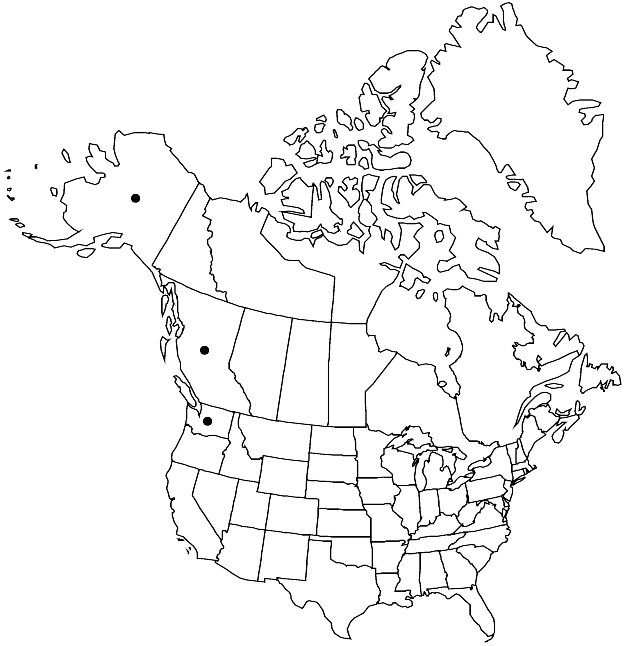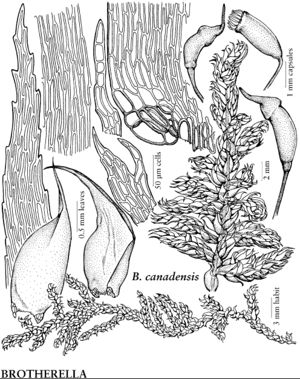Brotherella canadensis
J. Hattori Bot. Lab. 100: 355, fig. 1. 2006.
Plants medium-sized, in wefts or turfs, yellow to golden green. Stems 4 (–10) cm, 1.5–2 mm wide across main leafy shoot, not complanate-foliate, regularly to irregularly pinnate, branching in one horizontal plane; pseudoparaphyllia foliose to filamentous. Leaves falcate-secund, especially at stem and branch apices, ovatelanceolate, tapering gradually to apex, 1.5–1.7 mm; margins usually entire, toothed in acumen; alar cells 2–4, orange. Sexual condition dioicous. Seta redbrown, 1.5–2 cm. Capsule inclined, cylindric, slightly asymmetric; operculum long-rostrate, as long as urn.
Phenology: Capsules mature late fall–early spring.
Habitat: Peatlands, forest margins, humid rock faces near streams and water, epiphytic, near tree bases
Elevation: low to moderate elevations
Distribution

B.C., Alaska, Wash.
Discussion
Brotherella canadensis resembles Hypnum in the field, but is distinguished by its strong gloss and inflated, pigmented alar cells. The species is distinguished from B. henonii by its smaller plants and strongly falcate-secund leaves, especially near shoot and branch apices.
Selected References
None.
